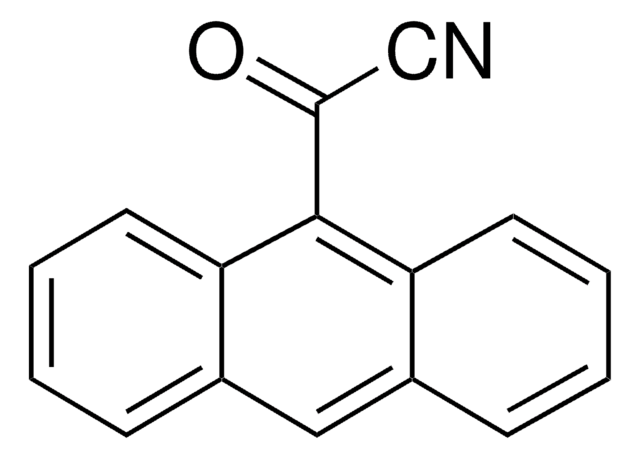15014
Ethanolamine
≥99%
Sinónimos:
2-Aminoethanol, 2-Aminoethyl alcohol, ETA, MEA, MEA 90, MEA-LCI, Monoethanolamine
About This Item
Productos recomendados
densidad de vapor
2.1 (vs air)
presión de vapor
0.2 mmHg ( 20 °C)
Análisis
≥99%
formulario
liquid
temp. de autoignición
1436 °F
lim. expl.
17 %
impurezas
≤0.5% water (Karl Fischer)
residuo de ign.
≤0.05% (as SO4)
índice de refracción
n20/D 1.454 (lit.)
bp
170 °C (lit.)
69-70 °C/10 mmHg
mp
10-11 °C (lit.)
densidad
1.012 g/mL at 25 °C (lit.)
trazas de catión
Fe: ≤10 mg/kg
cadena SMILES
NCCO
InChI
1S/C2H7NO/c3-1-2-4/h4H,1-3H2
Clave InChI
HZAXFHJVJLSVMW-UHFFFAOYSA-N
¿Está buscando productos similares? Visita Guía de comparación de productos
Aplicación
- Catalytic performance and acidic analysis of chloroaluminate ionic liquid: Explores the effects of ethanolamine on the catalytic properties of ionic liquids in oil synthesis (Hu et al., 2024).
Otras notas
Palabra de señalización
Danger
Frases de peligro
Clasificaciones de peligro
Acute Tox. 4 Dermal - Acute Tox. 4 Inhalation - Acute Tox. 4 Oral - Aquatic Chronic 3 - Eye Dam. 1 - Skin Corr. 1B - STOT SE 3
Órganos de actuación
Respiratory system
Código de clase de almacenamiento
8A - Combustible corrosive hazardous materials
Clase de riesgo para el agua (WGK)
WGK 2
Punto de inflamabilidad (°F)
195.8 °F - Pensky-Martens closed cup
Punto de inflamabilidad (°C)
91 °C - Pensky-Martens closed cup
Equipo de protección personal
Faceshields, Gloves, Goggles, type ABEK (EN14387) respirator filter
Certificados de análisis (COA)
Busque Certificados de análisis (COA) introduciendo el número de lote del producto. Los números de lote se encuentran en la etiqueta del producto después de las palabras «Lot» o «Batch»
¿Ya tiene este producto?
Encuentre la documentación para los productos que ha comprado recientemente en la Biblioteca de documentos.
Los clientes también vieron
Nuestro equipo de científicos tiene experiencia en todas las áreas de investigación: Ciencias de la vida, Ciencia de los materiales, Síntesis química, Cromatografía, Analítica y muchas otras.
Póngase en contacto con el Servicio técnico








